Dreaming of a 144-hour visa-free Shanghai vacation? Why wouldn’t you when it offers so much flexibility for the traveler in transit and en route to their next destination?
Shanghai is exciting, beautiful, and rich with a unique blend of east, west, and everything in between. Six days – or 144 hours – exploring in and around this city and the other destinations permitted under the visa-free transit policy, is ample time to enjoy the vibrant flavors, style, culture, history, art, and excitement available to the curious traveler who really wants to know a place.
Designed to simplify travel arrangements, 144-hour visa-free transit in Shanghai means that you only need to meet the requirements (we’ve detailed these below), and you’re on your way to enjoying a transit with a difference.
Ready to travel visa-free to the Pearl of the Orient? Let’s dive into the specifics so you know what needs to happen next.
> Learn more about China transit visas in this article
What does 144-hour visa-free transit in Shanghai mean?
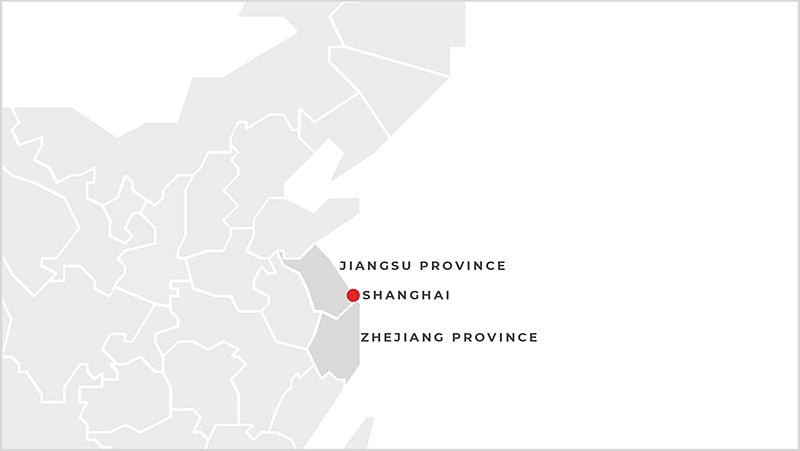
Visa-free travel means exactly that: Travel without a visa. In terms of the 144-hour visa-free Shanghai transit, it means you have the flexibility of gaining entry to Shanghai at specific ports without the need to secure a visa prior to arrival.
The 144-hour visa-free transit policy was made available to international visitors to China in 2013. It is now available at 37 different ports of entry in 26 cities, with Shanghai being just one of those. In fact, when you take advantage of the 144-hour visa-free transit in Shanghai, you actually gain access to the zone which encompasses Shanghai – Jiangsu Province – Zhejiang Province. This allows visitors to transfer via certain ports of entry to stay within the administrative precincts of Shanghai Municipality, Jiangsu Province and Zhejiang Province for 144 hours.
| City/Province | Ports of entry |
| Shanghai | Shanghai Pudong International Airport
Shanghai Hongqiao International Airport Shanghai Port (for passenger transport) Shanghai Railway Station |
| Jiangsu Province | Nanjing Lukou International Airport
Port of Lianyungang (for passenger transport) |
| Zhejiang Province | Hangzhou Xiaoshan International Airport
Ningbo Lishe International Airport Port of Wenzhou (for passenger transport) Port of Zhoushan (for passenger transport) |
Okay, so that’s all great, but how do you know if your country is on the list of those eligible for visa-free travel in China? Relax, we have you covered. We’ve already put that list together. The good news is that the 144-hour visa-free transit policy applies to 54 countries (check out the list below).
| 40 European countries | Austria, Belgium, Czech Republic, Denmark, Estonia, Finland, France, Germany, Greece, Hungary, Iceland, Italy, Latvia, Lithuania, Luxembourg, Malta, Netherlands, Poland, Portugal, Slovakia, Slovenia, Spain, Sweden, Switzerland, Monaco, Russia, United Kingdom, Ireland, Cyprus, Bulgaria, Romania, Ukraine, Serbia, Croatia, Bosnia and Herzegovina, Montenegro, North Macedonia, Albania, Belarus, Norway |
| 6 countries in North and South America | United States of America, Canada, Mexico, Brazil, Argentina, Chile |
| 2 Oceania countries | Australia, New Zealand |
| 6 Asian countries | Japan, South Korea, Singapore, Brunei, United Arab Emirates, Qatar |
If you’ve spotted your country within the list, then it’s time to step through other requirements to meet the visa free transit policy.
To qualify for a 144-hour visa-exemption transit, here’s what you need:
- A valid passport with at least 6 months validity and required visas for destination countries (if relevant)
- Your ticket for travel beyond China with a confirmed date and seat, indicating departure within the 144-hour window. The ticket must also show your destination before arrival in China, including any stopovers outside China (required as evidence of a third country). For transit purposes, Hong Kong and Macau are considered third territories. Be aware that your departure city and the destination city must be in different countries or regions.
- To smooth the process on arrival in China, let the airline check-in staff know you will need a visa-free transit. They will advise customs at the related Chinese airport custom of your request before landing.
- Prior to disembarking from the plane, you will complete the Arrival Card for Temporary Entry Foreigners.
- Once you have disembarked from the plane, visit the relevant customs counter to obtain approval for your 144-hour visa-free Transit and have your passport stamped with a “Temporary Entry Permit”.
And that’s it. Who knew visiting Shanghai could be so easy?
Still not sure whether the 144-hour visa-free transit is right for you?
There’s no doubt international travel comes with restrictions and it always pays to be doubly sure that you’re meeting all the entry requirements when visiting another country. If you’re still unsure as to whether you qualify for the 144-hour visa-free transit in Shanghai, run through the list of specific exclusions list right here:
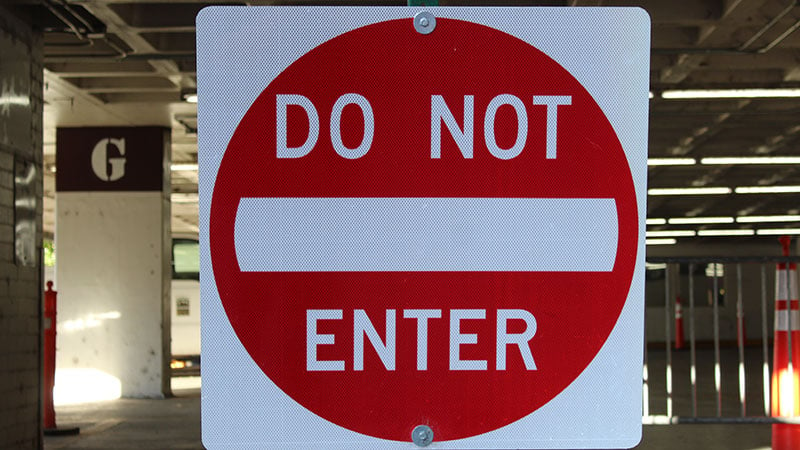
- Those who are inadmissible to China in accordance with relevant laws and administrative regulations
- Those whose international travel documents are valid for less than 3 months at the time of application, or those who possess international travel documents containing refusal stamps affixed by Chinese visa-issuing authorities;
- Those who have records of illegal entry or exit, illegal stay or residence, or illegal employment in China in the past 5 years;
- Those who have seriously violated the regulation of registering their addresses for temporary residence in China with the public security bureaus in the past 2 years.
In addition, foreign crew members aboard international sailing vessels and their accompanying family members are not eligible for this policy.*
* Learn more here.
Are there any restrictions to the 144-hour visa-free transit policy?

This is a great question – and yes, there are some restrictions.
First, the policy applies for 144 hours of visa-free transit, rather than simply visa-free entry. This means you must transit to a third country or region, not simply return to your country of origin.
In the table below, you’ll find examples that help clear up the confusion.
| Travel route | 144-hour visa-free transit in Shanghai |
| Australia – Shanghai – United Kingdom | ✓ |
| Australia – Shanghai – Australia | X |
| Australia – Shanghai – Singapore^ | ✓ |
| Australia – Singapore^ – Shanghai – Australia | ✓ |
^ Note that Singapore is an example only. Substitute any other relevant destination, for example, Hong Kong or Kuala Lumpur in your travel itinerary.
Your time starts now!
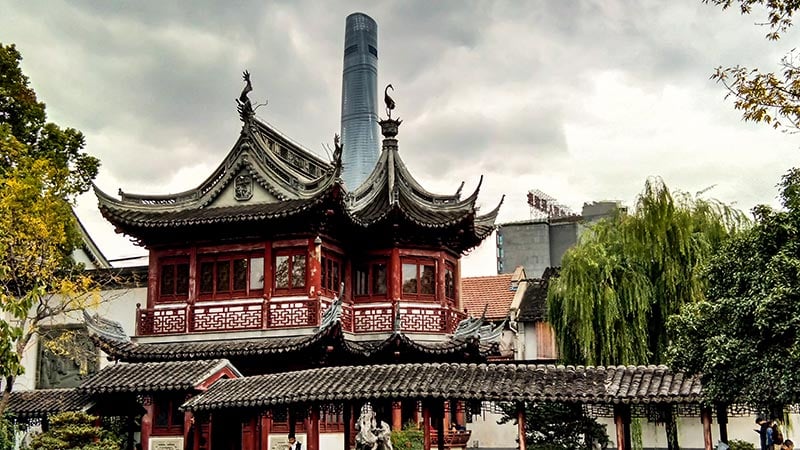
So, how do they calculate your 144 hours in Shanghai? This is a vitally important detail because of course every minute on your 144-hour visa-free transit counts. Let’s make sure you’re clear on just how your time on the ground will be calculated.
Here’s what you need to know:
The duration of your stay in Shanghai will begin from 00:00 o’clock the following day after entry at one of the following: Shanghai Pudong International Airport, Shanghai Hongqiao International Airport, Shanghai Port (for passenger transport), and Shanghai Railway Station. From 00:00 o’clock the following day after entry you are permitted to stay for up to six days without a visa in the area that encompasses Shanghai, Jiangsu and Zhejiang.
If due to unforeseen circumstances you’re unable to depart on time, for example, due to a flight cancellation or requirement for unexpected medical treatment, you will need to apply for the relevant permit at the corresponding provincial or municipal exit and entry administrative bureau.
Other important details to know about the Shanghai 144 hour transit visa
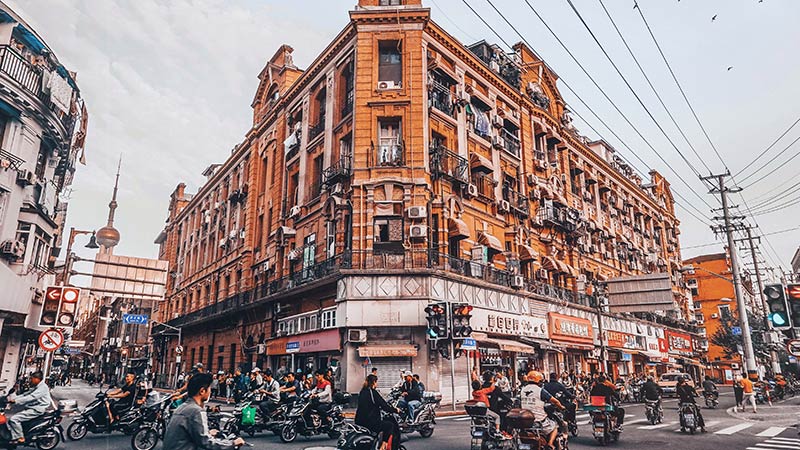
Here are some other important details to know if you’re after a 144-hour transit visa for Shanghai.
Arrive in Shanghai. Leave from another city (in the transit zone)
As we said earlier, the 144-hour visa-free transit zone covers Shanghai – Jiangsu Province – Zhejiang Province. That means you can travel within the geographical area covered by what is commonly referred to in China as a defined economic region, in which you will discover:
- Shanghai, the Pearl of the Orient, which is a veritable treasure trove of east-meets-west culture and history
- Jiangsu Province, famous for the city of Suzhou, exquisite silks, water towns, and idyllic scenes that have inspired poets and philosophers for centuries
- Zhejiang Province, where you’ll discover waterways, the finest tea, and Chinese gardens of unrivaled beauty.
With a well-designed private tour of Shanghai and the surrounding region, you can expect to enjoy the very best, while also visiting other carefully selected destinations within the zone that is Shanghai – Jiangsu Province – Zhejiang Province. And it’s all possible on a 144-hour visa-free transit.
Did we say there’s a bonus? You should also know that you can arrive in one city and leave from another in the same visa-free transit zone. That means you can arrive in Shanghai (or any of the other ports listed above), apply for the 144-hour transit visa, and then depart China from Hangzhou because both cities are located in the same region of the 144-hour visa-free zone.
Just remember, however, if you arrive in Shanghai and secure a 144-hour transit visa, you are not able to depart China from Beijing, because it’s not in the same area of the Shanghai 144-hour visa-free transit zone. Similarly, if visitors plan to book and purchase their air ticket to a third country as the next destination after they enter China, they cannot apply for a 144-hour transit visa upon arrival in China.
How to follow the rules for visa-free transit in Shanghai
Now we might be stating the obvious, but for completeness, we’re just saying here that during your visa-exemption transit, you must abide by all Chinese laws and regulations. Specifically, what this means is you:
- Cannot leave the specified area of stay or overstay the visa-exemption period
- Are required to register where you are staying with the local public security bureaus or foreigner service stations, or those who are providing accommodation can complete the registration on your behalf in the first 24 hours of entry. If you’re staying at a hotel, the hotel is obliged to register where you are staying for you.
Be aware that in the case of force majeure which necessitates a longer period of stay than 144 hours within the visa exemption area, you must lodge an application to the exit and entry administration department of a public security bureau for the corresponding stay or residence documents. And if you’re thinking you might overstay your visit, travel beyond the specified area, or depart from a port you’re not supposed to, then think again. This isn’t looked on favorably, so it’s best to adhere to the requirements of the visa.
What can I see on a 144-hour visa-free holiday in Shanghai?
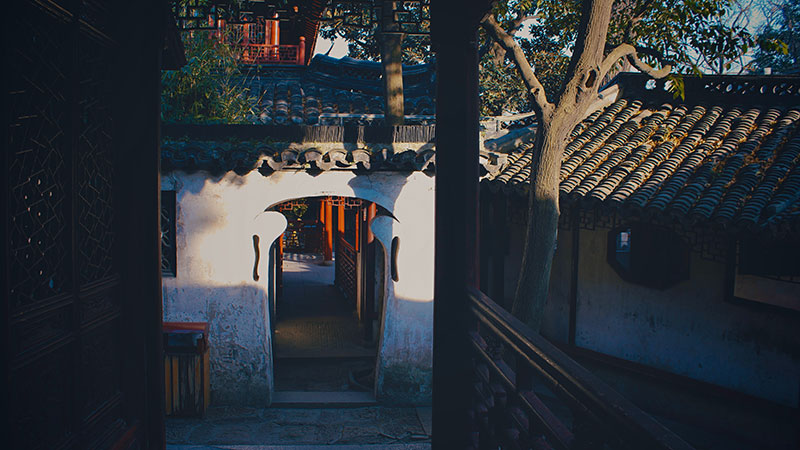
Already planning your 144 hour transit visa holiday? Here’s our curated list of destinations and sites to see if you have six days.
| City | Why visit | What to see |
| Shanghai | China’s most cosmopolitan city. Expect to see influences from the east, west, and everything in between. | The Bund, Yuyuan Garden, Shanghai Museum, Shanghai Tower, Yu Garden Bazaar, Jade Buddha Temple, Shanghai Science and Technology Museum, Zhujiajiao Ancient Water Town, Shanghai Disneyland Park |
| Hangzhou | Capital of Zhejiang Province. Explore quintessentially Chinese scenery woven into ancient silk screens. Experience tea culture found nowhere else in China. | West Lake, Lingyin Temple, Leifeng Pagoda, Workmanship Demonstration Pavilion, Dadou Road Historic Block, Meijiawu Tea Culture Village, The Grand Jing-hang Canal Museum, China National Silk Museum, China National Tea Museum, China Umbrella Museum, Zhejiang West Lake Gallery |
| Nanjing | China’s ancient capital and now Jiangsu’s modern capital. Discover Chinese history of a different sort, with significant moments memorialized at key monuments and locations. | Nanjing Museum, Xuanwu Lake, Qinhuai River, Purple Mountain (Dr. Sun Yat-sen’s Mausoleum, Purple Mountain Observatory, Ming Xiaoling Mausoleum,) Nanjing City Wall, Confucius Temple, Memorial Hall of the Victims in Nanjing Massacre by Japanese Invaders, Presidential Palace (Nanjing) |
| Ningbo | Port city of Zhejiang Province. Find out why Ningbo held such appeal for ancient traders. Learn why it is home to one of the oldest libraries in China. | Tianyi Ge (Tianyi Pavilion, one of China’s oldest libraries), Dongqian Lake, Tiantong Temple, Ningbo Museum, Temple of King Ashoka, Xuedou Mountain, Qiantong Ancient Town, Mount Putuo (one of the four sacred mountains in Chinese Buddhism) |
| Suzhou | China’s unrivaled capital of silk, classical gardens, and water towns. Imagine a China from the past and you’ll find it in Suzhou. | Humble Administrator’s Garden, Master of the Nets Garden, Lingering Garden, Lion Grove Garden, Tiger Hill, Suzhou Museum, Panmen (Pan Gate), Grand Canal, Pingjiang Road, Tongli Water Town, Zhouzhuang Water Town |
| Wuxi | A city at the bank of Lake Tai in Jiangsu Province, enjoy the appeal of a city nicknamed ‘Little Shanghai’. | Grand Buddha at Ling Shan, Yuantouzhu (Turtle Head Isle) at Taihu (Lake Tai), Liyuan Garden, Xihui Park, Jichang Garden, Nanchang Street, The Plum Garden, Donglin Academy |
| Shaoxing | Historically famous for its traditional Chinese bridges, boats, and Shaoxing wine. | Lan Ting (Orchid Pavilion), Shen Garden, Former Residence of Lu Xun, East Lake, Anchang Ancient Town, Cangqiao Straight Street |
| Wenzhou | Demonstrating breathtaking economic growth and with a reputation for putting shoes on the feet of many of the world’s population, Wenzhou is worth a visit for its cultural history and natural landscapes. | Yandang Mountains, Jiangxinyu (Jiangxin Island), Sanyang Wetland, Yaoxi Scenic Resort |
| Jiaxing | A city at the center of textile production for the world; an attribute matched only by its fame for Zongzi, a local dish of glutinous rice wrapped in bamboo leaves. | Wuzhen Ancient Town, Xitang Ancient Town, Yuehe Street, South Lake, Qiantang Tidal Bore |
| Huzhou | One of the ‘silk cities’ of Zhejiang Province, discover why it consistently ranks among the most highly regarded destinations for Chinese silk. | Nanxun Ancient Town, Mount Mogan, Feiying Tower, Anji Bamboo Garden |
What’s the process for obtaining the 144-hour visa-free transit?

If you’re ready to line up for 144-hour visa-free transit in Shanghai, here’s what you need to do.
Step 1
At check-in for your travel to Shanghai or any other cities covered by the 144-hour visa-free transit zone, show your valid international travel document and onward tickets (air/vessel/train) to a third country (region) with a confirmed date and seat.
The carrier will submit your information to the corresponding immigration inspection station in China for examination. Your application will be processed on arrival once all details have been confirmed.
Step 2
You will see dedicated inspection lanes for 144-hour visa-free transit passengers regardless of which port you enter by.
Remember you can come arrive by plane, train, or ship at any of the following: Shanghai Pudong International Airport, Shanghai Hongqiao International Airport, Shanghai Port (for passenger transport), and Shanghai Railway Station. Follow the signs to the various inspection areas.
Step 3
On arrival, you will need to provide the immigration officer with your valid international travel document and onward plane, vessel or train ticket to a third country (region) with a confirmed date and seat within 144 hours upon arrival. You will also need to show completed arrival/departure cards filled out in detail. Keep in mind that you should be ready to answer questions raised by immigration officers. A Temporary Entry Permit sticker will be placed on a page of your passport.
Good to know: There is NO charge for a temporary entry permit at the immigration inspection stations.
A final word on the 144-hour visa-free transit in Shanghai
Visa-free travel in Shanghai using the 144-hour visa-free transit is ideal for travelers who have a stopover or transit in Shanghai and have arrived by plane or train. It’s also perfect for passengers disembarking at Shanghai Port International Cruise Terminal or Shanghai Wusongkou International Cruise Terminal.
Even if you take a spontaneous trip to Shanghai and don’t have a visa organized in advance, and you intend to travel on to another destination (that is not your country of origin), it really does offer incredible flexibility. The real bonus is you’re not limited to staying in Shanghai, but can travel more widely to other destinations within the designated zone of Shanghai – Jiangsu Province – Zhejiang Province. With the opportunity to take in the sights, sounds, flavors, culture, and history of the entire region, you can truly design a travel adventure you’ll love and always remember.
Ready to discover this very special part of China? Let us take you there with one of our private and fully guided day tours, multi-day tour packages, and custom tours. Enquire today and start exploring.


